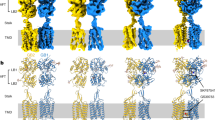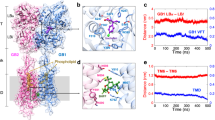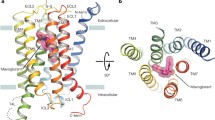Abstract.
Recent years have seen rapid and significant advances in our understanding of the G-protein-coupled γ-amino butyric acid, B-type (GABAB) receptor, which could be a therapeutic target in conditions as diverse as epilepsy and hypertension. This progress originated with the ground-breaking work of Bernhard Bettler’s team at Novartis who cloned the DNA encoding a GABAB receptor in 1997. Currently, the receptor is thought to be an unusual, possibly unique, example of a heterodimer composed of homologous, seven-transmembrane-domain (7TMD) subunits (named GABAB R1 and GABAB R2), neither of which is fully functional when expressed alone. The large N-terminal domain of the GABAB R1 subunit projects extracellularly and contains a ligand binding site. The similarity of the amino acid sequence of this region to some bacterial periplasmic amino acid-binding proteins of known structure has enabled structural and functional modelling of the N-terminal domain, and the identification of residues whose substitution modulates agonist/antagonist binding affinities. The intracellular C-terminal domains of the R1 and R2 subunits appear to constitute an important means of contact between the two subunits. Alternative splice variants, a common and functionally important feature of 7TMD proteins, have been demonstrated for the R1 subunit. Notably GABAB R1a differs from GABAB R1b by the possession of an N-terminal extension containing two complement protein modules (also called SCRs, or sushi domains) of unknown function. The levels at which each of the respective variants is expressed are not equal to one another, with variations occurring over the course of development and throughout the central nervous system. It is not yet clear, however, whether one variant is predominantly presynaptically located and the other postsynaptically located. The existence of as yet unidentified splice variants, additional receptor subtypes and alternative quaternary composition has not been ruled out as a source of receptor heterogeneity.
Similar content being viewed by others
Author information
Authors and Affiliations
Additional information
Received 15 October 1999; received after revision 29 December 1999; accepted 31 December 1999
Rights and permissions
About this article
Cite this article
Blein, S., Hawrot*, E. & Barlow, P. The metabotropic GABA receptor: molecular insights and their functional consequences . CMLS, Cell. Mol. Life Sci. 57, 635–650 (2000). https://doi.org/10.1007/PL00000725
Issue Date:
DOI: https://doi.org/10.1007/PL00000725




